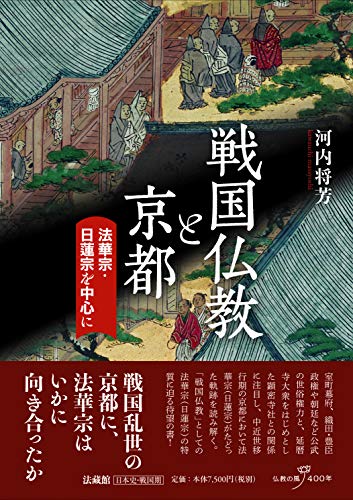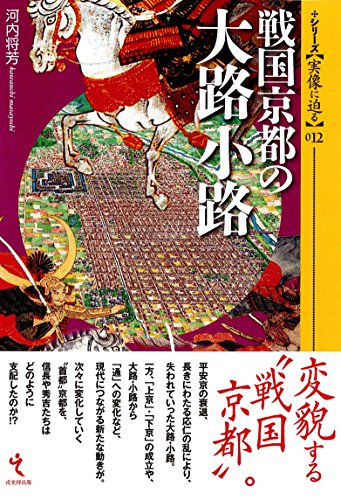3 0 0 0 「戦国仏教」論再考 : 京都と日蓮宗を中心に
- 著者
- 河内 将芳
- 出版者
- 仏教史学会
- 雑誌
- 仏教史学研究 (ISSN:02886472)
- 巻号頁・発行日
- vol.58, no.1, pp.48-68, 2015-11
2 0 0 0 OA <研究ノート>戦国期祇園会に関する基礎的考察
- 著者
- 河内 将芳
- 出版者
- 史学研究会 (京都大学文学部内)
- 雑誌
- 史林 = THE SHIRIN or the JOURNAL OF HISTORY (ISSN:03869369)
- 巻号頁・発行日
- vol.85, no.5, pp.700-723, 2002-09-01
個人情報保護のため削除部分あり
- 著者
- 河内 将芳
- 出版者
- 吉川弘文館
- 雑誌
- 日本歴史 (ISSN:03869164)
- 巻号頁・発行日
- no.870, pp.22-29, 2020-11
2 0 0 0 乗牛風流と鵲鉾についての考察
- 著者
- 河内 将芳
- 出版者
- 芸能史研究会
- 雑誌
- 芸能史研究 (ISSN:03869504)
- 巻号頁・発行日
- no.193, pp.1-10, 2011-04
2 0 0 0 書評 八反裕太郎著『描かれた祇園祭 : 山鉾巡行・ねりもの研究』
- 著者
- 河内 将芳
- 出版者
- 藝能史研究會
- 雑誌
- 藝能史研究 = History of the performing arts (ISSN:03869504)
- 巻号頁・発行日
- no.223, pp.71-74, 2018-10
- 著者
- 河内 将芳
- 出版者
- 芸能史研究会
- 雑誌
- 芸能史研究 (ISSN:03869504)
- 巻号頁・発行日
- no.203, pp.77-89, 2013-10
1 0 0 0 中世京都の都市と宗教
1 0 0 0 IR 戦国期祇園会に関する基礎的考察
- 著者
- 河内 将芳
- 出版者
- 史学研究会 (京都大学文学部内)
- 雑誌
- 史林 (ISSN:03869369)
- 巻号頁・発行日
- vol.85, no.5, pp.700-723, 2002-09
個人情報保護のため削除部分ありThe Gion-e, usually known as the Gion-matsuri, of the Sengoku Period 戦国時 代 in Kyoto tends to be thought of as a festival against authority. This paper argues how the characteristic of the Gion-e changed in relation to the Muromachi Shogunate 室町幕府 and the Sanmon Enryakuji 山門延暦寺 and especially focuses on yamahoko 山鉾. Yamahoko are (dashi 山車) that were and still are pulled or shouldered during Gion-matsuri. In this paper the following points are clarified. The groups of inhabitants who bore the yamahoko gradually transformed the essence of the cho 町, a local community, within the context of the changes in the relationships with the Shogunate and Sanmon daisyu 山門大衆, i.e., the mass of priests from Enryakuji, after Ounin and Bunmei Wars 応仁・文明の乱. What accelerated the change was not the existence of authority, but was rather the relation with Sanmon daisyu, although the Sanmon daisyu sometimes delayed the start of the Gion-e. In addition, the Tenbun Hokke War 天文法華の乱, a total confrontation between Sanmon daisyu and armed adherents of Hokke Sect 法華宗, and the relationship with the Shogunate gave birth to an alternative system supporting the yamahoko.
1 0 0 0 「天正四年の洛中勧進」再考--救済、勧進、経済
- 著者
- 河内 将芳
- 出版者
- 立命館大学
- 雑誌
- 立命館文學 (ISSN:02877015)
- 巻号頁・発行日
- no.614, pp.257-275, 2009-12
1 0 0 0 戦国仏教と京都 : 法華宗・日蓮宗を中心に
1 0 0 0 信長と京都 : 宿所の変遷からみる
- 著者
- 河内 将芳
- 出版者
- 興風談所
- 雑誌
- 興風 (ISSN:13452541)
- 巻号頁・発行日
- no.29, pp.1-21, 2017-12




